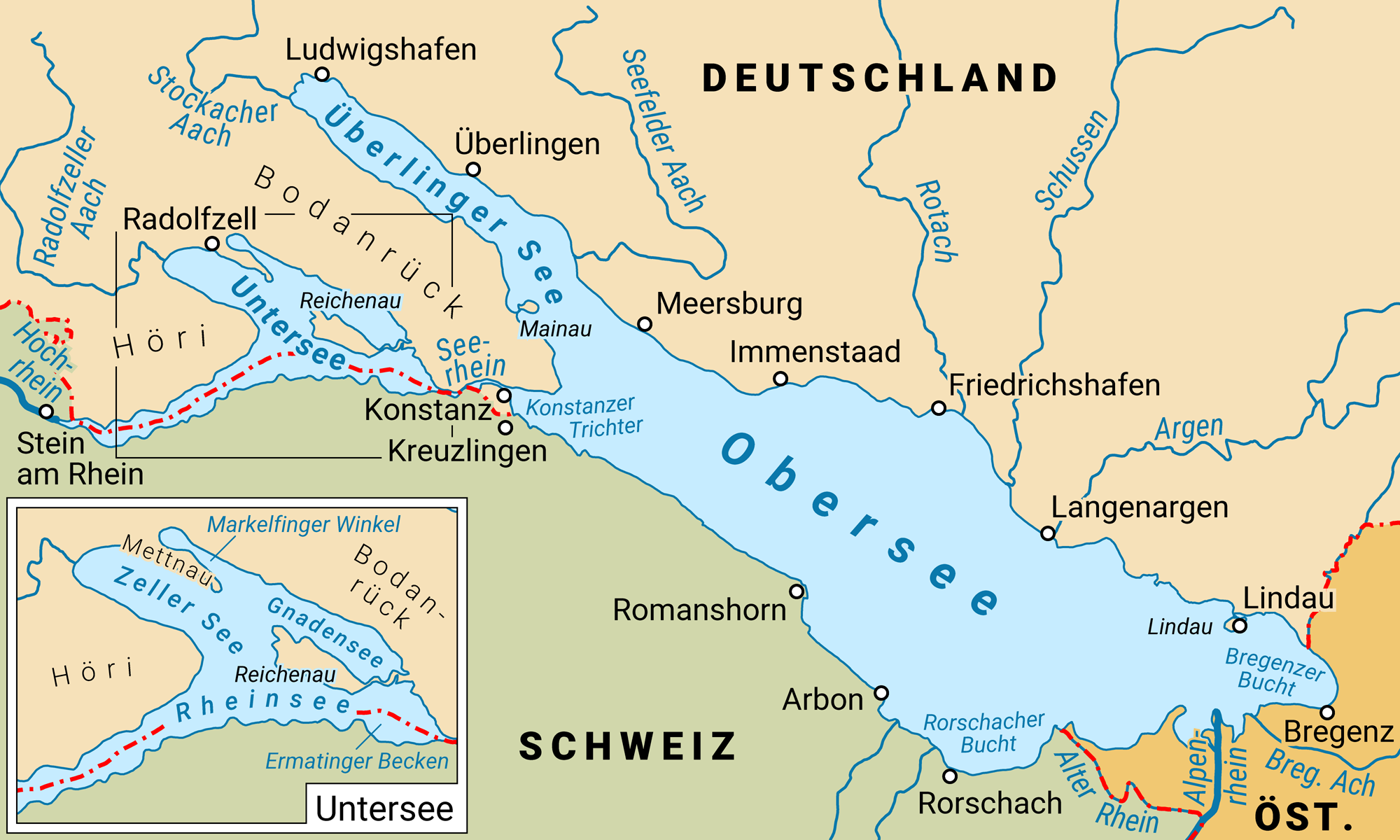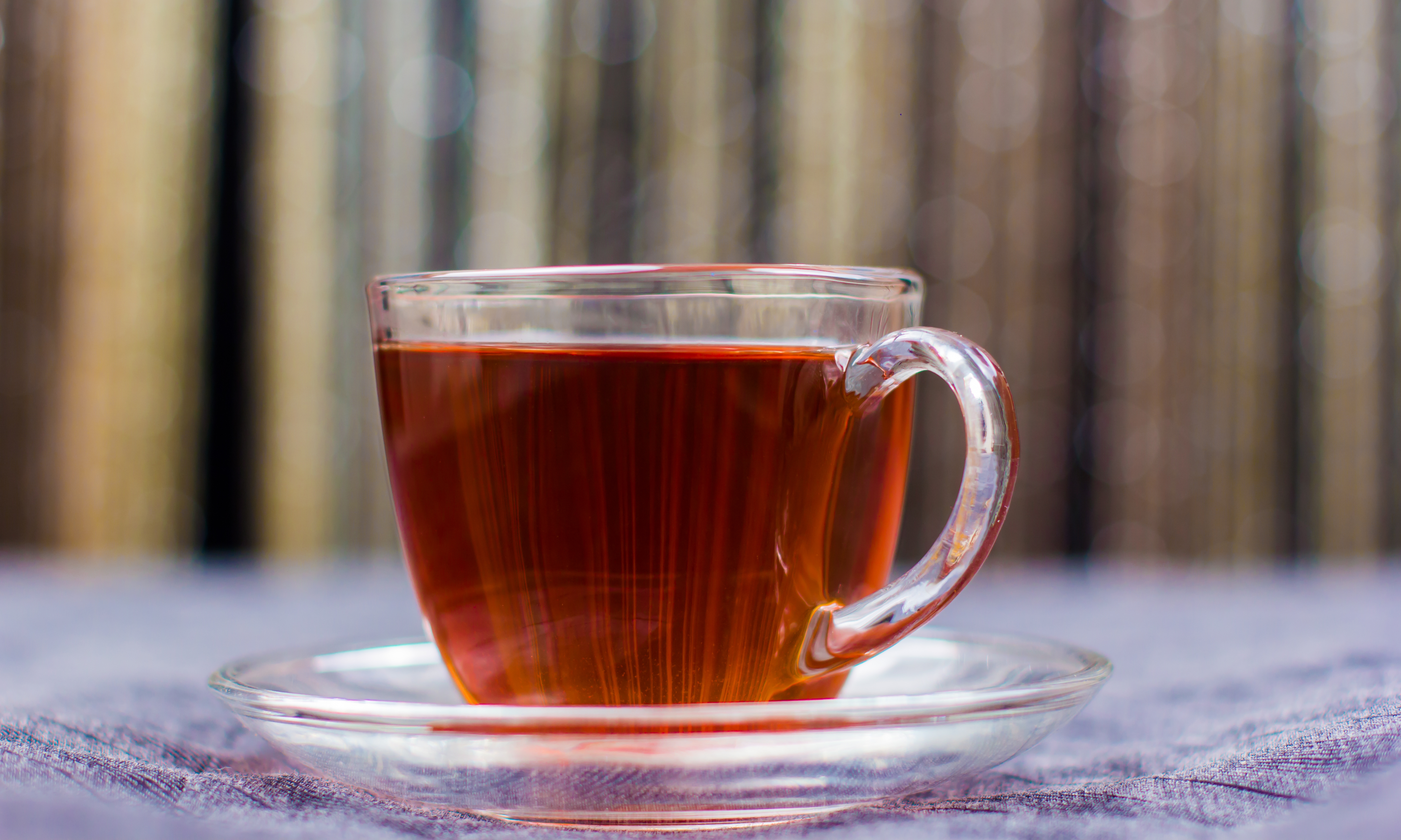Bodentee

This is a map of the Bodensee, or Lake Constance, Germany's largest lake1.

And this is a regular cup of tea, also called Tee in German2.
How much tea would it take to turn the entirety of Lake Constance into tea? Or: Is the annual global tea production enough to produce one Bodentee?
Lake Constance
The easiest part is figuring out the volume of Lake Constance, i.e. how much water we will need to turn into tea.
The IGKB (Internationale Gewässerschutzkomission für den Bodensee / International Water Conservation Comission for Lake Constance), the multilateral comission tasked with keeping Lake Constance clean, states the volume of the lake as exactly 48 km² 3. This includes both the upper and lower lakes. However, whether this number includes the Seerhein, the portion of the Rhine river connecting the two lakes, is not stated. You take what you can get.
Brewing Tea
Tea is brewed by pouring hot water of the leaves of the tea plant, Camellia sinensis. Depending on the processing of the tea, this can create green, black, yellow or other varieties of tea. Other types of tea, those not made from the leaves of the tea plant, such as herbal teas, are of no concern to us.
To ensure ultimate comparability – if not ideal taste –, we will use the number put forth by ISO 3103:2019, which proposes 2 grams of tea to be used for 100 ml of water. You will have to trust me on this, because I do not have 70 bucks lying around to buy the actual document. However, Tom Scott4 and Wikipedia5 both cite this number and I trust them.
To find out how much tea is produced annually, we turn to the crops and livestock products data provided by the FAO (Food and Agriculture Organization of the United Nations)6. Using this data, we find that in 2022, global production yielded around 29,760,668 tonnes of tea leaves7.
Some Math
Lastly, we just need to apply some middle school math to figure out how much tea is needed to turn Lake Constance into tea.
V = 48 km³ (volume of Lake Constance)
T = 2 g ÷ 100 ml (tea ratio)
x = mass of tea leaves needed to turn Lake Constance into tea
x = V × T
x = 48 km³ × (2 g ÷ 100 ml)
x = 4.8 × 1016 × (2 g ÷ 100 ml)
x = 4.8 × 1014 × 2 g
x = 9.6 × 1014 g
x = 960,000,000 t
This means, we would need 960 million tonnes of tea leaves to turn Lake Constance into (theoretically) drinkable tea, far more than is produced each year. So, how much of Lake Constance could we turn into tea?
m = 29,760,668 t (actual mass of tea leaves)
M = 960,000,000 t (theoretically needed mass of tea leaves)
y = part of Lake Constance we could turn into tea each year
y = m ÷ M
y = 29,760,668 t ÷ 960,000,000 t
y = 0.03100069583...
Conclusion
The portion of Lake Constance we could turn into tea using the annual global production of tea leaves is just slightly above 3 %, meaning we will only be able to create the first Bodentee in the 2050's and only if we stockpile all tea leaves produced until then and global production stays relatively constant. We will need 960 million tonnes of tea leaves to make this possible, as long as the volume of Lake Constance stays the same over the years.
[1] File:Gliederung des Bodensees.png. Wikimedia Commons. <https://commons.wikimedia.org/wiki/File:Gliederung_des_Bodensees.png>
[2] File:Red Tea.jpg. Wikimedia Commons. <https://commons.wikimedia.org/wiki/File:Red_Tea.jpg>
[3] Seedaten. IGKB. <https://www.igkb.org/bodensee/seedaten>
[4] Making an international standard cup of tea. Tom Scott. YouTube. <https://www.youtube.com/watch?v=nAsrsMPftOI>
[5] ISO 3103. Wikipedia. <https://en.wikipedia.org/wiki/ISO_3103>
[6] Crops and livestock products. FAOSTAT. <https://www.fao.org/faostat/en/#data/QCL>
[7] I just downloaded the data for 2022, tea leaves, production quantity and including all countries (counting China as one country to not count anything twice) and then used the sum function in R to sum the amount of tea each country produced that year. For completeness' sake, this is all the code I used:
raw_data <- read.csv("data.csv", header=TRUE)sum(raw_data$Value)




